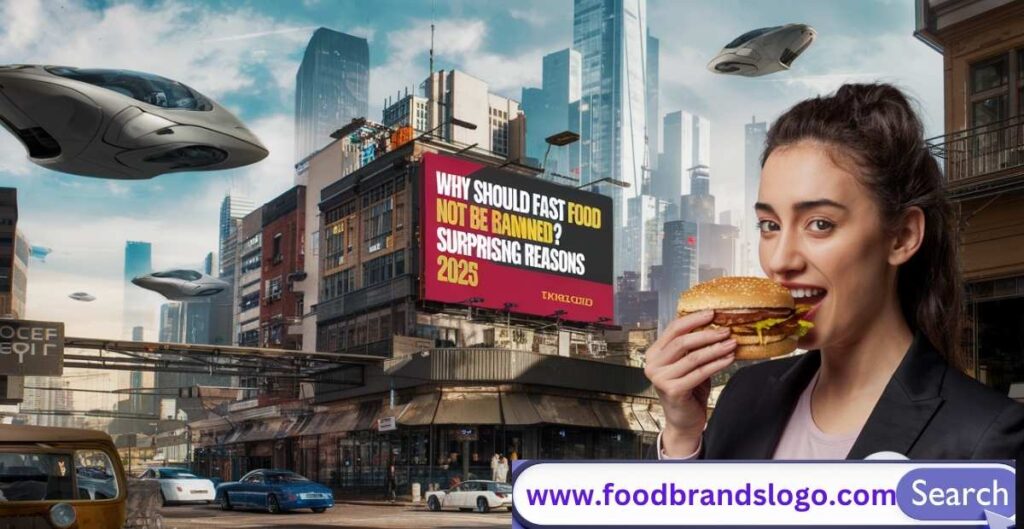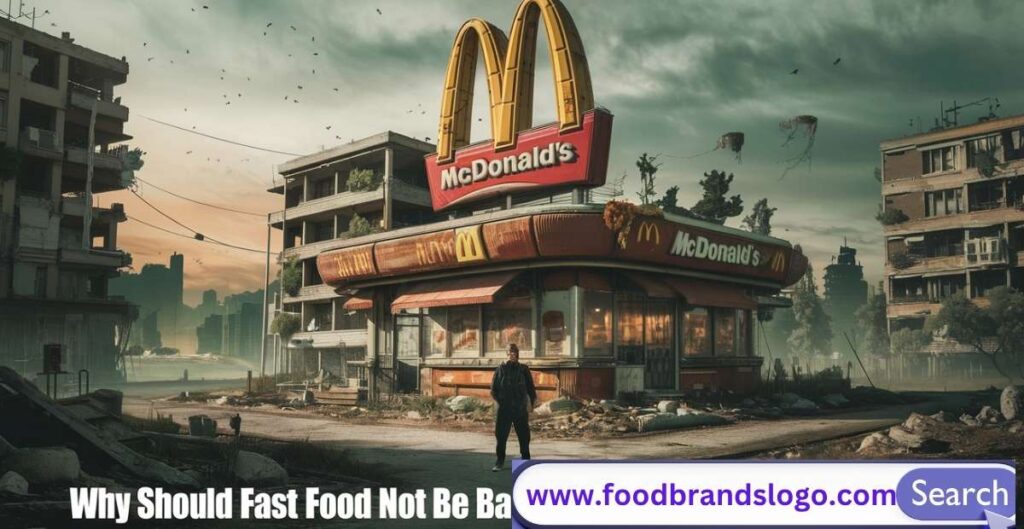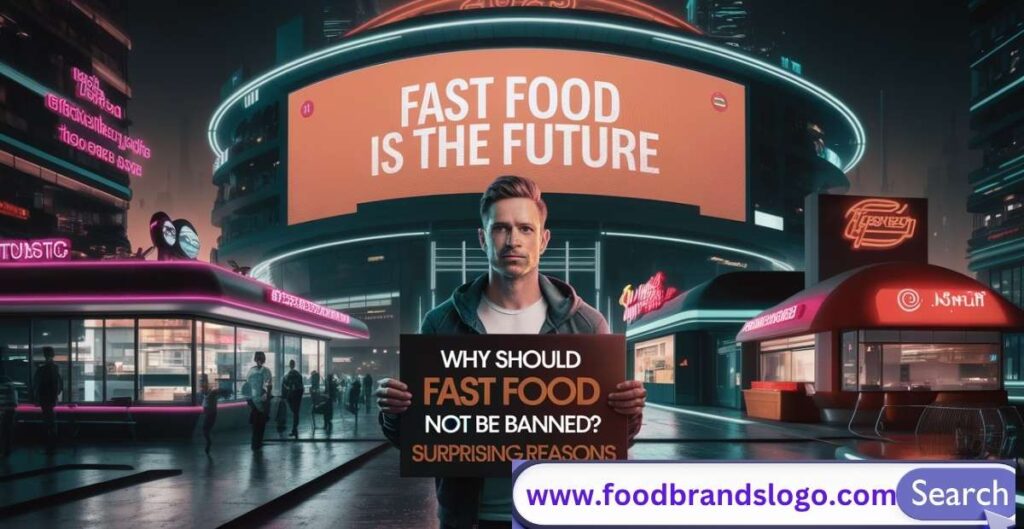Introduction
Imagine this: After a long shift, you’re clocking out. You’re running on fumes, the outside is dark, and on a Friday night, your fridge is more empty than your inbox. You’re thinking about survival when you go into a drive-thru for a fast bite, not about calories or issues. Thus why Fast Food Not Be Banned.
There is more to fast food than just burgers and fries. Many people view it as a comfort food, a time-saver, a necessity, and certainly, a reasonably priced meal. However, the argument for and against outlawing fast food has been more heated over time. According to critics, it is the cause of the rise in lifestyle disorders, obesity, and environmental harm. However, is outlawing fast food really the answer? Or are we overlooking its numerous functions in contemporary society?
We’ll look at strong and frequently unexpected arguments against a 2025 ban on fast food in this post. This discussion requires depth, ranging from preserving individual liberty to advancing economies, providing convenience, providing cultural significance, and even supporting sustainability objectives. Let’s get started.
Upholding Personal Freedom and Responsibility

Fast food prohibition is a human matter as much as a policy one. One fundamental freedom is the power to select what we consume. The choice should be yours, not imposed by the government, whether you’re reaching for a slice of pizza or a salad.
Individual choice is the cornerstone of our beliefs in democracies. We enter perilous terrain when we start dictating what people can and cannot consume. A complete restriction on fast food eliminates personal agency, even though some of its selections may be high in saturated fat or sodium.
More significantly, there are nuances to health. A person who eats fast food every meal is considerably different from someone who does so only once a week. Prohibition is a significantly less effective instrument than awareness, education, and moderation.
Why not give individuals more power to make educated decisions rather than believing they are incapable of doing so? Public health campaigns, educational initiatives, and informative labeling can all encourage wise choices while maintaining individual liberties. We must not undervalue the public’s capacity to make decisions if provided with the appropriate resources.
Economic Contributions of the Fast Food Industry
Fast food is a major economic driver in addition to being convenient. The fast food sector is expected to be worth over $1 trillion globally by 2025. It sustains millions of people in the United States alone, many of whom depend on these employment as their main source of income.
Fast food’s enormous contribution to job creation is one of the most compelling arguments against its prohibition. Fast food employs people of all ages and educational backgrounds, from fry cooks and cashiers to delivery drivers and marketing executives. Young workers frequently learn discipline, time management, and customer service in these positions, which prepares them for careers in a variety of fields.
Furthermore, a lot of fast food restaurants are not massive multinational conglomerates. These franchises are operated by regional company owners who boost regional economies. These owners give their neighbors jobs, pay taxes, and support neighborhood events.
Fast food prohibition would entail:
Losses of jobs at different levels
Increased joblessness in low-income regions
Decreased tax income for public services and city infrastructure
Ecosystem harm to small businesses
In summary, banning fast food would have a negative economic impact that would jeopardize the very areas we are trying to safeguard.
Addressing Convenience and Modern Lifestyles
The world we live in moves quickly. There is little time for cooking meals at home every day when juggling job, family, school, and personal obligations. Fast food is a solution in this situation, not a luxury.
Fast food is frequently the most convenient dinner option for people with hectic schedules, such as parents, students with deadline pressure, long-hour workers, and commuters caught in traffic. It’s accessible practically anywhere, rapid, and reasonably priced.
Remember that maintaining a nutritious diet requires resources, time, and effort, all of which not everyone possesses. Not every home has access to working kitchens, fresh ingredients, or even basic cooking skills.
Food insecurity could rise if fast food is eliminated without providing equally practical and reasonably priced substitutes, particularly in urban or low-income areas.
Promoting balance is a better strategy than outlawing fast food:
Provide fast food menu items that are healthy.
Encourage people to eat fewer portions.
Combine the nutritional value of fast food with its convenience.
Allow fast food to be a part of contemporary life without being used as a scapegoat.
Cultural and Social Relevance
Fast food is ingrained in our social and cultural fiber and isn’t just a convenience item.
Fast food is a major part of contemporary social life, from late-night Taco Bell runs with college pals to weekend family gatherings at McDonald’s. It’s a place where relationships and memories are created. Fast food outlets are frequently used as meeting places for communities of all ages since they are familiar and reasonably priced.
Fast food is a cultural reflection of fusion and globalization. Teriyaki Burgers in Japan and McSpicy Paneer in India are two examples of how chains modify their menus to suit regional preferences, proving that fast food isn’t a one-size-fits-all idea. It is always changing to accommodate local culinary tastes and conventions.
By banning fast food, we’re not just limiting what people eat—we’re removing social spaces, traditions, and cultural adaptations that have come to define the food experience for millions.
Promoting Health Through Education, Not Prohibition
The discussion about fast food is frequently centered on health issues. It’s also true that certain fast food is incredibly high in fat, sugar, salt, and calories. However, outright prohibiting fast food isn’t fair or effective because it suggests that people can’t make healthy decisions on their own.
We educate instead of outlawing desserts or booze. This also holds true for quick food.
People’s interactions with fast food can be greatly influenced by nutrition education and food literacy. People typically make better decisions when they are aware of the ingredients in their meals.
Nowadays, many fast-food restaurants provide:
Menus’ calorie counts
Options that are grilled rather than fried
Fruit cups, salads, and other nutritious side dishes
Instead of restricting people’s alternatives, the emphasis should be on giving them the power to make better decisions. Promoting healthy eating practices through social media campaigns, school initiatives, and community outreach can have a significant impact.
People won’t learn about health from a ban on fast food. However, education will.
Environmental Considerations and Sustainable Practices

Arguments against fast food frequently center on environmental issues like waste and pollutants. Despite the industry’s environmental impact, a lot of fast food companies are actively working toward sustainability objectives.
In actuality, several of the biggest fast food chains are currently setting the standard for green innovation. By 2025, McDonald’s has committed to using only recycled or renewable packaging. Compostable cups are being tested by Starbucks. Burger King has investigated energy-efficient kitchen appliances and reusable packaging.
Fast food restaurants are changing the world in the following ways:
Using packaging that decomposes naturally
Purchasing food from sustainable or nearby farms
Putting money into initiatives to reduce food waste and donate
Installing gadgets that use less energy
Instead of outlawing fast food, customers may pressure companies to make even better products. Making well-informed purchases has the potential to significantly alter an industry.
Instead of doing away with fast food completely, the goal is to make it more sustainable.
Case Studies and Real-World Examples
Let’s examine two real-life scenarios that reinforce why banning fast food may not be the best path forward.
Case Study 1: Los Angeles Fast Food Moratorium (2008–2018)
In 2008, South Los Angeles outlawed the establishment of new stand-alone fast food restaurants in an attempt to fight obesity in low-income neighborhoods. However, after ten years, a UCLA study found no appreciable drop in obesity rates. In reality, the prevalence of obesity and diabetes continued to increase.
Even worse, rather than significantly lowering the number of fast food outlets, the restriction hampered business potential and economic growth in already undeveloped neighborhoods. Residents also had less convenient food options because there were no nutritious meal options accessible.
This case shows that banning fast food without offering better options leads to ineffective public health outcomes and missed economic opportunities.
Case Study 2: UK Calorie Labeling Reform (2022)
In 2022, the UK adopted a more sensible stance by mandating that eateries, including fast food companies, post calorie information on their menus rather than outright prohibiting fast food. This preserved choice while enabling diners to make well-informed judgments.
After only a few months of implementation:
More than 30% of diners said they altered their meal choices in response to calorie information.
Support for the policy among the general public grew.
Fast food restaurants started rewriting their recipes to have fewer calories.
This strategy promoted healthy eating habits while maintaining individual choice, which benefits both business and public health.
Conclusion
Why, then, shouldn’t fast food be prohibited in 2025?
Because prohibiting it fails to acknowledge the complexity of contemporary life. Fast food accommodates our hectic schedules, offers reasonably priced meals, supports millions of workers, and even serves as a cultural bridge. It has potential to contribute to a healthy society, has economic value, and is becoming more sustainable—if we let it.
Let’s concentrate on what functions:
Public education regarding nutrition
Promoting responsible innovation in fast food chains
Encouraging healthy eating practices without stigmatizing or limiting
promoting improved labeling and healthier menu options
When combined with wise public policy and personal accountability, fast food is not the bad guy—rather, it is a component of the solution. Progress should be prioritized above restriction.
FAQs
Why do some people want fast food to be banned?
Some health advocates argue that fast food contributes to rising obesity rates, poor nutrition, and chronic illnesses. Environmental concerns, such as waste production and energy consumption, are also often cited. However, critics of banning fast food believe these issues can be addressed through education, innovation, and regulation—without removing personal choice.
Is banning fast food effective in improving public health?
Evidence suggests that banning fast food does not significantly improve health outcomes. For example, the 10-year fast food restriction in South Los Angeles didn’t reduce obesity rates. Instead, public health improves more consistently when people have access to food education, clear labeling, and healthier menu options.
How can fast food be made healthier without banning it?
Fast food can be made healthier through various strategies:
- Reducing portion sizes
- Offering grilled and low-calorie options
- Transparent calorie labeling
- Including more vegetables, whole grains, and lean proteins
Many brands have already started implementing these changes based on consumer demand.
Is fast food always unhealthy?
Not necessarily. While some menu items are high in sodium, sugar, and fat, many fast food chains offer balanced options. Items like grilled chicken sandwiches, salads, and customizable bowls can align with a healthy diet—especially when paired with informed decision-making.
What are better alternatives to banning fast food?
Better alternatives include:
- Nutrition education in schools and communities
- Public awareness campaigns on portion control and balanced diets
- Incentives for fast food brands to use sustainable practices
- Improving access to affordable, healthy foods in underserved areas
These approaches focus on empowerment rather than restriction.

